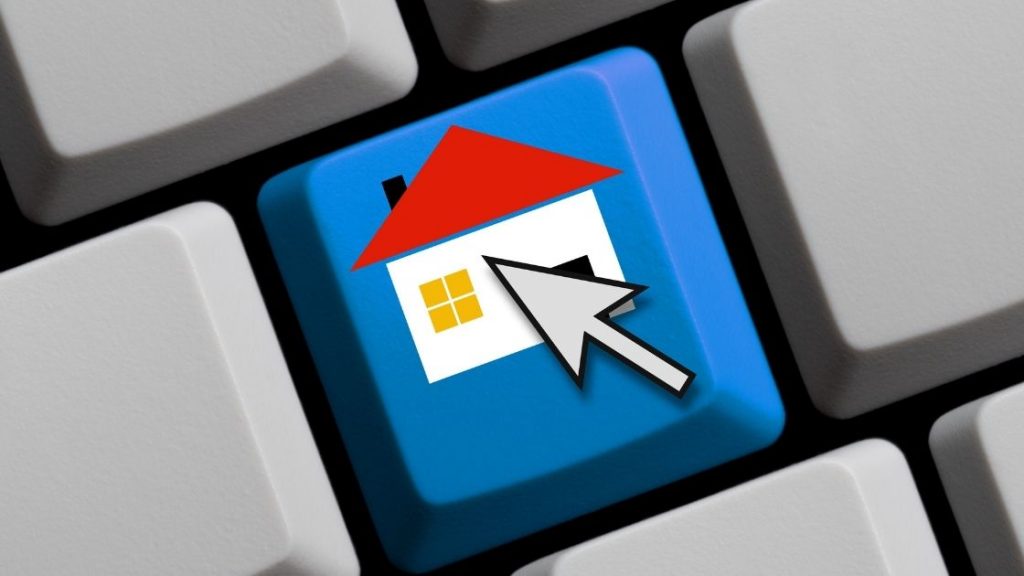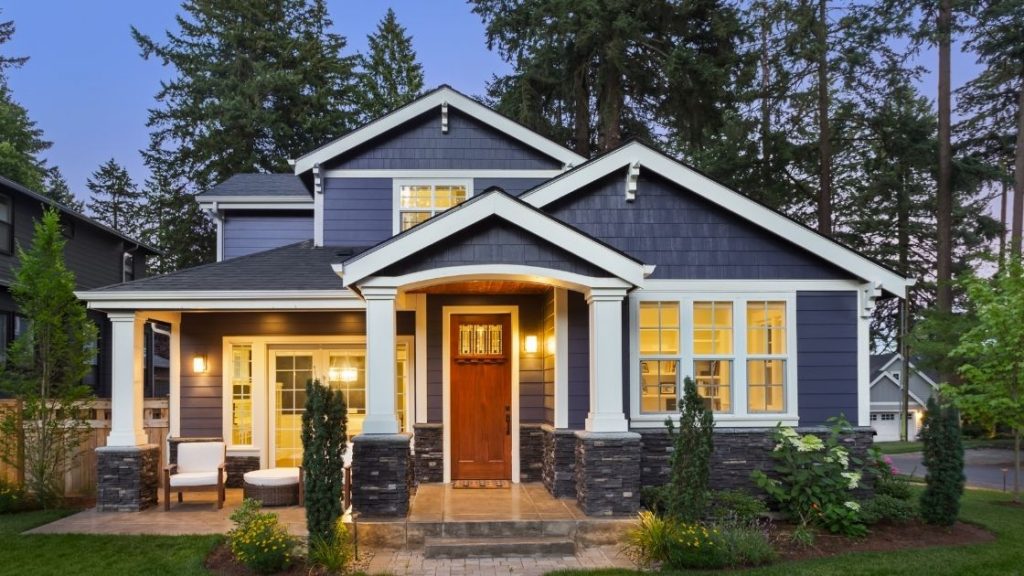There has never been a better time to automate your rental property management.
Advancements in technology now allow landlords to automate many of the key property management functions that used to take up a lot of time and energy.
If you are a landlord self-managing your properties, this is great news.
This guide will explore why you should automate your rental property management and provide you a detailed roadmap on how to do it.
If you want to skip the introductory stuff and jump straight into the automation steps, click here.
Let’s get into it!
Table of Contents
Why Automate Your Rental Property Management?
You should automate your rental property management to save time, effort, and money. Tasks like listing your rental property, screening tenants, collecting rent, tracking maintenance requests, and bookkeeping are time-consuming and repetitive. By automating these functions through online tools and platforms, you can make your rental business both efficient and hassle-free.
As an added benefit, many of these tools are easy to use and free. We’ll offer our recommendations on the tools we like the most (and actually use) and offer alternatives for you to explore as well.
Why Not Use A Property Manager For My Rentals?
You can use a property manager to handle your rental properties, but that comes at a cost. You can expect to pay between 8%-12% of monthly rent, plus expenses. Some firms will charge a flat fee per rental of say $100, but most use the percentage of rent as their fee.
Source: All Property Management
Those fees can put a huge dent in your profits. Unless your properties are cash flowing well, you may not have much leftover after the property management company takes its cut. In addition to the monthly fees, property management firms also typically charge you to fill a vacant unit. That fee is usually equal to a full month’s rent.
So whenever you are facing a vacancy, not only will you not receive rents during the time that the property is unoccupied, you will need to pay the property management firm a full month’s fee to fill the unit.
Brutal.
On top of all of the costs, you will still need to manage the property management firm. Not all firms are good. Some will not stay on top of repairs or their workers will perform shoddy repairs. Many property management firms cut corners because they handle hundreds of properties and yours is just one among that vast pool.
In short, nobody is going to care about, and be vigilant about, your property like you. For that reason, I self-manage.
If you choose to self-manage, you should try to make that task as automated and easy as possible.
With that goal in mind, let’s dive into some great strategies on how to do this.
Automate Your Rental Property Listing Process
One thing is certain when you are a landlord. At some point, you will need to list your property because a tenant is vacating. I own and manage nine rental properties and I have found that the most time-consuming part of managing my properties is filling vacancies.
For that reason, you want to automate this process as much as possible.
Let’s start with the listing process.
You will need to create templates for each property that include a compelling description of the property and great photos (I have always been an advocate of professional photos because they make your listing stand out). Once you have them, you can use them every time you need to list that property.
When you are ready to list your property, you need to find a great platform that will show your listing to a lot of potential tenants. I use Zillow Rental Manager to list my properties. Zillow is huge and gets over 34 million monthly views across its three listing platforms: Zillow, Trulia, and Hotpads.
Source: Zillow
Zillow saves your listings, including your property description and photos, so you can simply re-activate your listing the next time you need to fill a vacancy.
They also provide online rental applications and tenant screening tools, like credit, background, and eviction checks. You can coordinate tenant communications through their platform during the application process and even have tenants e-sign your lease once they have been approved.
In short, it is a one-stop-shop for your rental listing activities.
Listing on Zillow used to be free, but now they charge a $9.99 per week fee whenever you want to list a rental property on their platform. They allow you to list your first property for free, but after that, you will need to pay the weekly fee for additional listings.
I have found that my properties usually get rented within a couple of weeks using Zillow, so I don’t get too worked up about the fee. It’s still a whole lot cheaper than paying a property manager a full month’s rent to fill your vacancy.
If you want to explore other options besides Zillow, you can look into Apartments.com and Realtor.com, who are the two other major players in this space.
They both have very large reach in terms of user views and seem to offer comparable services, so choose the platform that makes the most sense for you in terms of price and usability.
Related Reading: Filling vacancies is a time-consuming, but vital part of managing your rental properties. Long vacancies can absolutely decimate your profits. If you want to learn the strategies that I use to reduce vacancies in my rentals (which have been operating at near zero percent vacancy for many years) check out my article on the topic here.

Automate Showing Your Properties
Part of the listing process involves showing prospective tenants the property.
This includes back and forth communications between you and the tenant around showings. If you don’t want to clutter up your email or your text messages, you can use Zillow’s platform to communicate with potential tenants and schedule individual showings.
But rather than coordinate individual showings for each person, I like to make showings as efficient as possible by holding open houses during designated times. Each week I usually hold one evening slot after work during a weekday and one morning slot on Saturday for people who prefer to shop for their new rental on the weekends.
I like to be present at the open houses, so I can answer questions and highlight some of the great features of the rental. I also have an FAQ sheet for each property that I can hand out that answers common questions, like who pays for which utilities, who is the cable provider for the location, what is the application process, etc.
If you want to automate the showing process further, you can.
For example, if the property is vacant, you can have an electronic lock on the door that can be opened with a temporary code that you provide interested parties. They can then go at the designated time and you don’t even have to be there.
Of course, you run the risk of weird things happening if you are not at the property. I suppose you could install cameras in the place (and let folks know they’re there) to discourage any shenanigans.
I wouldn’t let anyone into my properties without me being there, but if you choose this route, make sure you at least have copies of valid IDs for anyone you let into your property. You don’t want random unidentified people roaming your rental.
Automate Rent Collection
Ok, now that you’ve automated your listing process and your property showings and have a great tenant in your property, you need to collect rent. This part is also easily automated.
Gone are the days where you wait for a check in the mail (and all of the excuses that you sometimes hear from tenants around why you haven’t received it).
I have used cozy.co (now part of Apartments.com) for rent collection for years now. I am very happy with them. They are completely free to use for both landlords and renters, which is awesome. They have an easy-to-use platform where I can see exactly where each tenant is regarding their payment.
Cozy offers automatic payment withdrawals from your tenant’s bank to your bank account through ACH transfers. So your tenants can set up the rent payments to be withdrawn at a specified date each month and they do not have to worry about it again.
Some of my tenants are roommates and like to pay their part of the rent separately. Cozy accommodates that as well. If your tenants want to pay with credit cards, they can do that too, but they will be charged a fee (2.75%).
Finally, if your tenants happen to pay late, Cozy automatically assesses late fees. No more arguing with your tenants about late fees. Awesome.
On a related note, I require in my lease that renters carry renter’s insurance. Cozy allows you to verify that your tenants have renter’s insurance and offers tenants the option to purchase affordable renter’s insurance from them. It’s just one less thing that you and your renters have to worry about.
When I started automating rent collection years ago, it was a huge benefit. Every month, I used to keep track of who paid and who didn’t and stressed about it. I had to badger my tenants who were late and it was a big hassle every month.
Now all of my tenants pay promptly because they have set up their withdrawals automatically. I can easily keep track of payment status in one place on cozy’s website and there are no excuses from tenants anymore because everything is tracked. If you haven’t automated rent collection yet, I highly encourage you to do so.
Cozy is not your only free option. I use them because they never gave me a reason to leave, but you can also use free services like Zillow Rental Manager and Rentler.
Automate Repairs and Maintenance
Your rentals are going to need periodic repairs and maintenance. Fortunately, there are tools that you can use to track tenant repair requests and manage the maintenance process.
Innago is a free tool that allows tenants to upload pictures and videos that capture the repair or maintenance issue. You can know precisely what the problem is and you can share those pictures and videos with your contractors.
Another great thing about using this platform is that all repair requests are documented, so there is indisputable evidence of what the request was and when it was resolved. If you ever run across a “professional tenant” who tries to scam you by withholding rent because they claim you did not perform needed repairs, this can be a great way to prove that you did perform repairs promptly and completely.
Related reading: If you want to learn more about potential tenants scams and how to avoid them, check out my article on the topic here.
Innago will notify you immediately when a tenant request is lodged and you can instantly respond to your tenant so they know it’s being addressed.
On a related note, you can view these repairs at a high level and see which problems occur most frequently, and figure out ways to improve your operations.
If you use this tool and have a reliable stable of contractors, taking care of repairs and maintenance is a breeze.
One final tip to automate matters further is to ask your contractors to set up online payments and receipts. You shouldn’t have to deal with getting paper invoices and paying with checks.
There are a ton of mobile and online payment options – you should encourage your contractors to adopt them. Shouldn’t be an odd request in this day and age.
Automate Bookkeeping
If you are using spreadsheets to track income and expenses, that’s fine, but there are options to automate your bookkeeping. The most obvious option is to hire a bookkeeper. In this gig economy, there are many places where you can find them. Upwork is a very well-known platform to find bookkeepers.
If you prefer to do these tasks on your own, you can use applications like Quickbooks that can make the process easier.
I have been singing about the advantages of automation this entire time, but I have a confession to make.
I still use spreadsheets to track all of my financial activity relating to my rentals. I tried using Quickbooks, but I couldn’t get everything quite right.
With my spreadsheets, all of my information is organized just how I like it and nothing falls through the cracks.
Sometimes the old ways are best…
Conclusion
Automating your rental property management can dramatically free up time to do what matters to you. Most likely, you got into rental property investing because you wanted passive income. Well, if you have been doing this for any time at all, you know it is not completely passive.
But with some of the automation strategies we covered here, I hope that you will find yourself that much closer to running a hassle-free rental property business.
If you want to learn more about real estate investing including great strategies for landlords, check out my other posts on real estate investing here.

